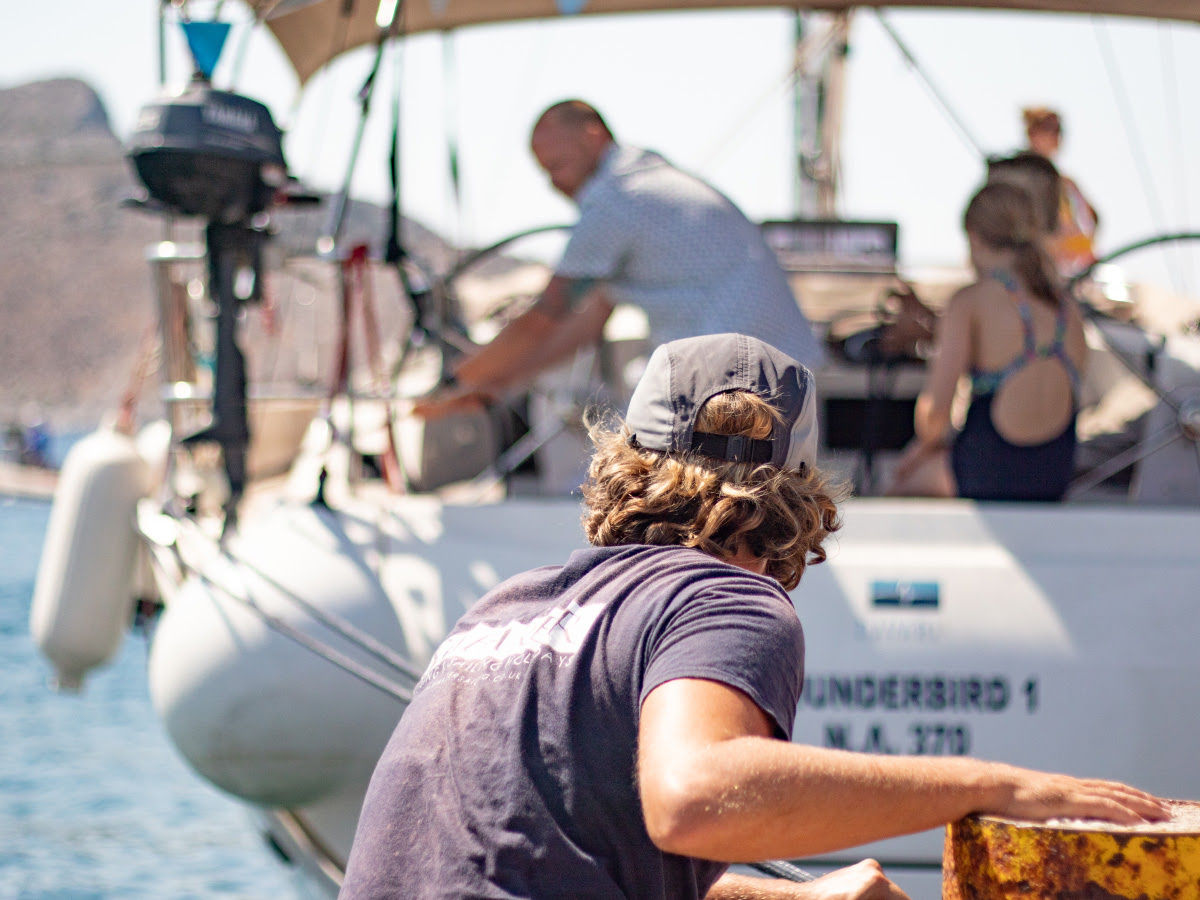
How to manage anxiety, fear, and panic while on a boat
Sailing brings many personal rewards. It allows you to learn to manage both the boat and the crew independently, explore unknown places, and to find yourself and discover your limits. Often, it also helps to overcome your fears. However, there are moments that can unsettle or intimidate even the most experienced skipper: an unexpected increase in wind, a critical passage, or a health problem on board. How can you manage anxiety and avoid panic when everything seems out of control?
In reality, many sailors are quite familiar with fear on board in its various forms. It is very likely that there is no skipper who has never experienced a moment of fear at sea. But what is fear in general? Where does it come from, and why does it appear? How can it be overcome when you need to manage a sailing trip?
Discover the best boat rental deals

Fear at sea is a good travel companion
Fear is important, experts say. In fact, in many cases, it is even healthy. Fear sharpens the senses, makes us cautious, and helps us survive. It is completely normal and makes both mind and body more alert. It is an entirely useful emotion, even if it doesn’t always feel that way in real situations.
If our ancestors hadn’t experienced fear, many of them would have been eaten by wild animals or fallen off cliffs. Over the course of evolution, the ability to perceive fear has been a survival advantage for individuals, as the sensation of fear warns of danger and thus helps protect one’s safety and well-being.

The real problem is excessive anxiety
However, when anxiety exceeds a critical level, the performance required to solve problems on board decreases significantly. The more anxious we are, the more our problem-solving ability is impaired. Driven by fear, we do not necessarily make the best or most effective decisions.
Of course, there are also various fears on board that everyone would rather avoid. The fear of water in general, for instance, and therefore the fear of falling overboard, or the fear of no longer being able to control the boat. Anyone who experiences fear on board would prefer to completely block this unpleasant sensation. But it doesn’t always work.
To understand why this happens, it is helpful to look at the origins of anxiety. Experts say that fears can be learned as a legitimate part of human learning, or they can be adopted unintentionally. For example, if one grew up with a parent who had stressful experiences while sailing, or who held prejudices against sailing, considering it dangerous and only for adventurers or “odd” people. These educational messages can become internalized beliefs over the years, triggered in many situations on board.

Anxiety caused by triggers and old traumas
Some people tend to stay in their comfort zone, which is not so much comfortable as it is familiar, and therefore often remain far below their potential. The underlying belief — “I can’t do it anyway” — then becomes a self-fulfilling prophecy: this mindset prevents taking on new challenges, leaving no opportunity for correction.
Anxiety can be caused by both internal and external triggers. For example, there is the fear of expectations: suffering from seasickness or being caught in a sudden storm. But there are also triggers that may be known or unknown. A memory, a specific smell, a certain sound, or a physical sensation that suddenly appears and is connected to a stressful experience or a past memory.
For instance, if as a child you traveled by boat with your parents, were caught in a storm, and stayed below deck full of fear, memories of that event can suddenly and unexpectedly resurface — for example, when you smell the mustiness of the interior spaces again. The brain suddenly recalls a triggering event and reacts immediately, reactivating the intense fear response from the past.

Facing fear in practice
To control a state of fear or excessive anxiety, simple breathing techniques are often helpful. In this case, exhalation should last two to three times as long as inhalation. Pairing the breath with a useful thought can also have a positive effect. It is also helpful to focus on something pleasant or neutral in the surrounding environment — the passing clouds, the sun, or the boat gliding safely through the water even when there are many waves.
However, it is important not to sugarcoat things, because our brain won’t believe it: you can’t lie to yourself. It’s about having useful and realistic thoughts that you are fully convinced of. Even a tiny residual doubt of just 3% about a reassuring thought can dominate in a state of acute anxiety, greatly weakening or even nullifying its calming effect. It is better to focus on the experience of the crew or the skipper, who has probably already handled much more challenging situations. Talking also helps — exchanging impressions about the surrounding situation, the weather, the risks, and possible escape routes.

Differences between men and women in handling anxiety
There are differences in how men and women handle anxiety. For example, male skippers often feel ashamed even to associate with their anxiety, viewing it as a flaw or weakness. In these cases, they find it difficult to talk about their fears and prefer to describe triggers and reactions using words other than “fear.” Women, on the other hand, rarely have trouble naming their fears as such and are more open about their emotions and perceived weaknesses.
At the same time, men are generally more ready to actively take on tasks on a sailing boat and willing to compete for the skipper role, while women prefer to learn by observing and want to fully understand something before translating it into independent action. Even when taking on the skipper role, women often allow others to take command.
In reality, many women on board appear braver and more fearless than men. This is because, evolutionarily, women are protectors and guardians. They are more cautious in anticipating danger, mentally preparing for it in advance and thus avoiding unnecessary risks. However, when danger actually arises, women’s instinct for self-preservation and protection kicks in.

The key is good preparation
Seasoned sailors experience fear differently in dangerous situations compared to novices. This doesn’t mean they are insensitive; rather, they experience it at a different moment than the rest of the crew, due to their greater experience. Fear strikes the experienced sailor well before a dangerous situation occurs, putting them in a better position to anticipate, prepare for, and avoid it.
The optimal behavior of the skipper, which ensures maximum safety, is to anticipate adversity before it arrives and to radiate calm optimism during challenging situations. It’s logical — what would happen on board if the skipper, the person in command, panicked with wide-eyed fear?
Good preparation of both the crew and the boat, along with clear communication, is therefore extremely important. According to sailing instructors, fear can only be avoided through proper planning, because sailing should always be enjoyable and should never cause anxiety or panic.
In conclusion, fear on board a boat is important, but too much fear is useless and can be avoided. Communication and preparation are as essential as the willingness to learn, participate, and try regardless.
Discover the best boat rental deals
You May Also Like

Discover Croatia’s Exquisite Coastal Gems: Embark on Your Sailing Adventure from These Stunning Port Cities
26/10/2023
Sailing between Palma de Mallorca and Menorca: Gems of the Balearic Islands
07/10/2025






